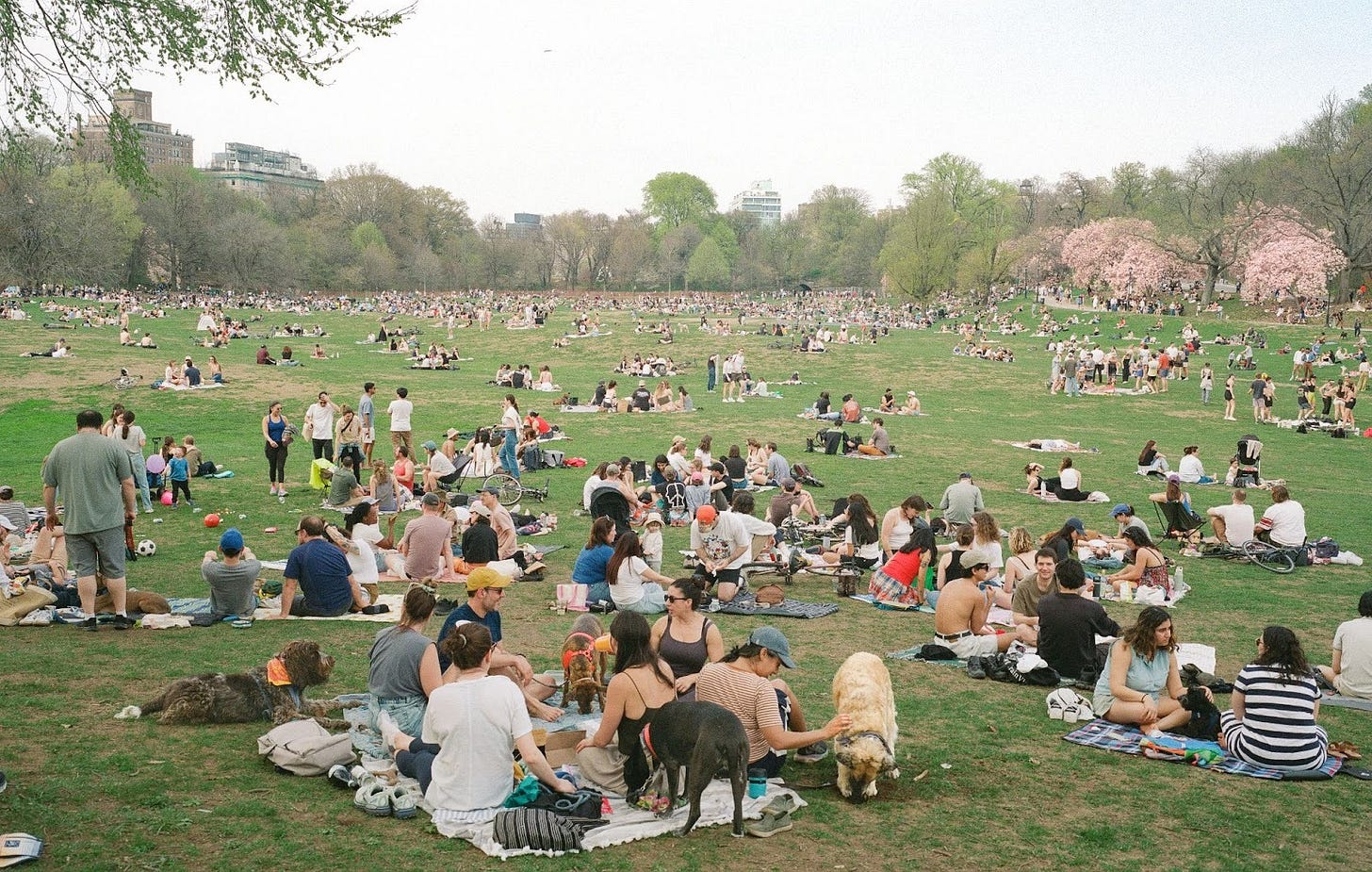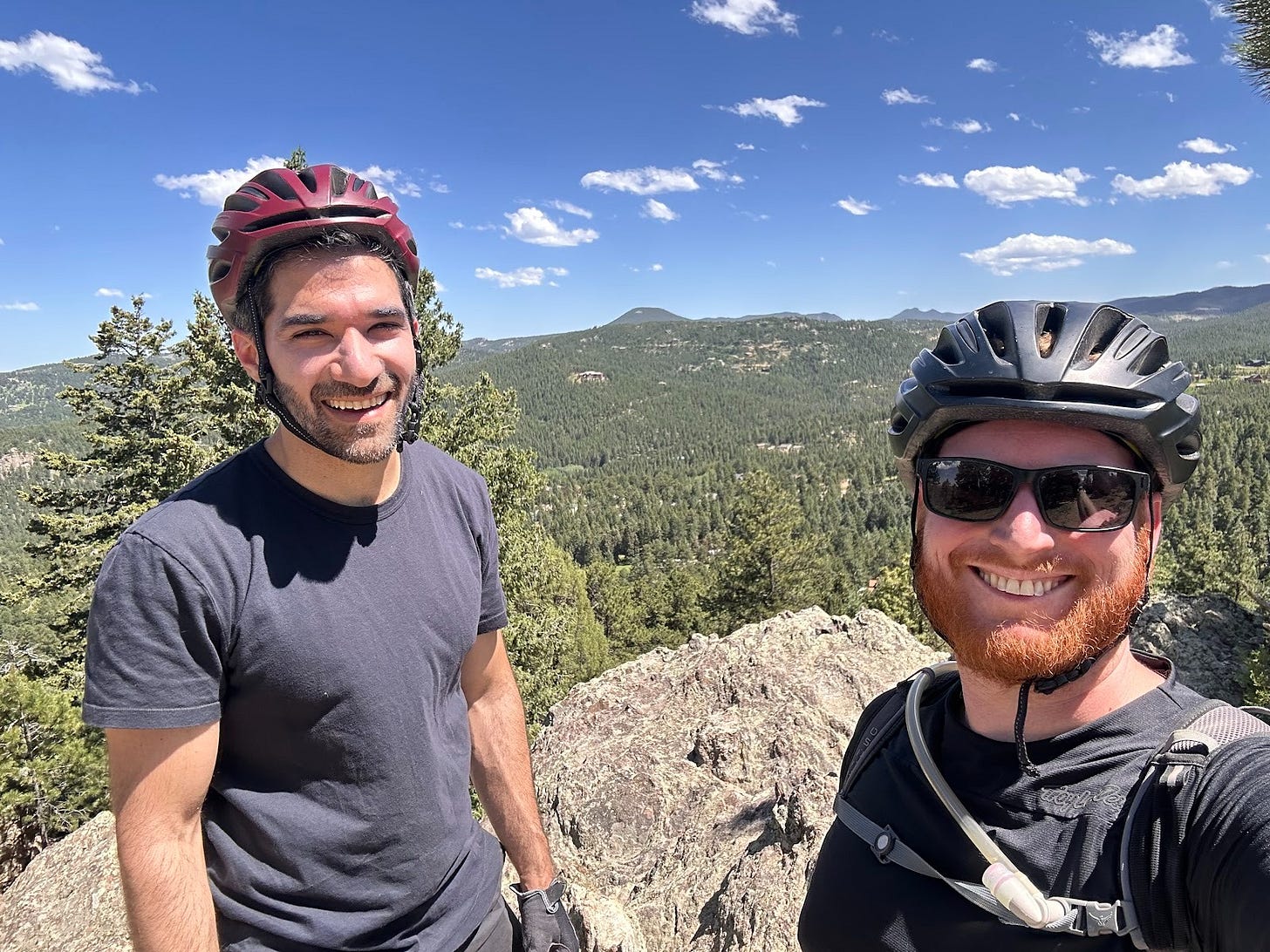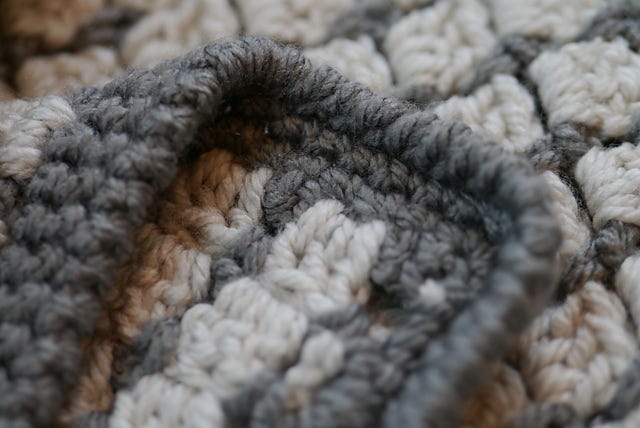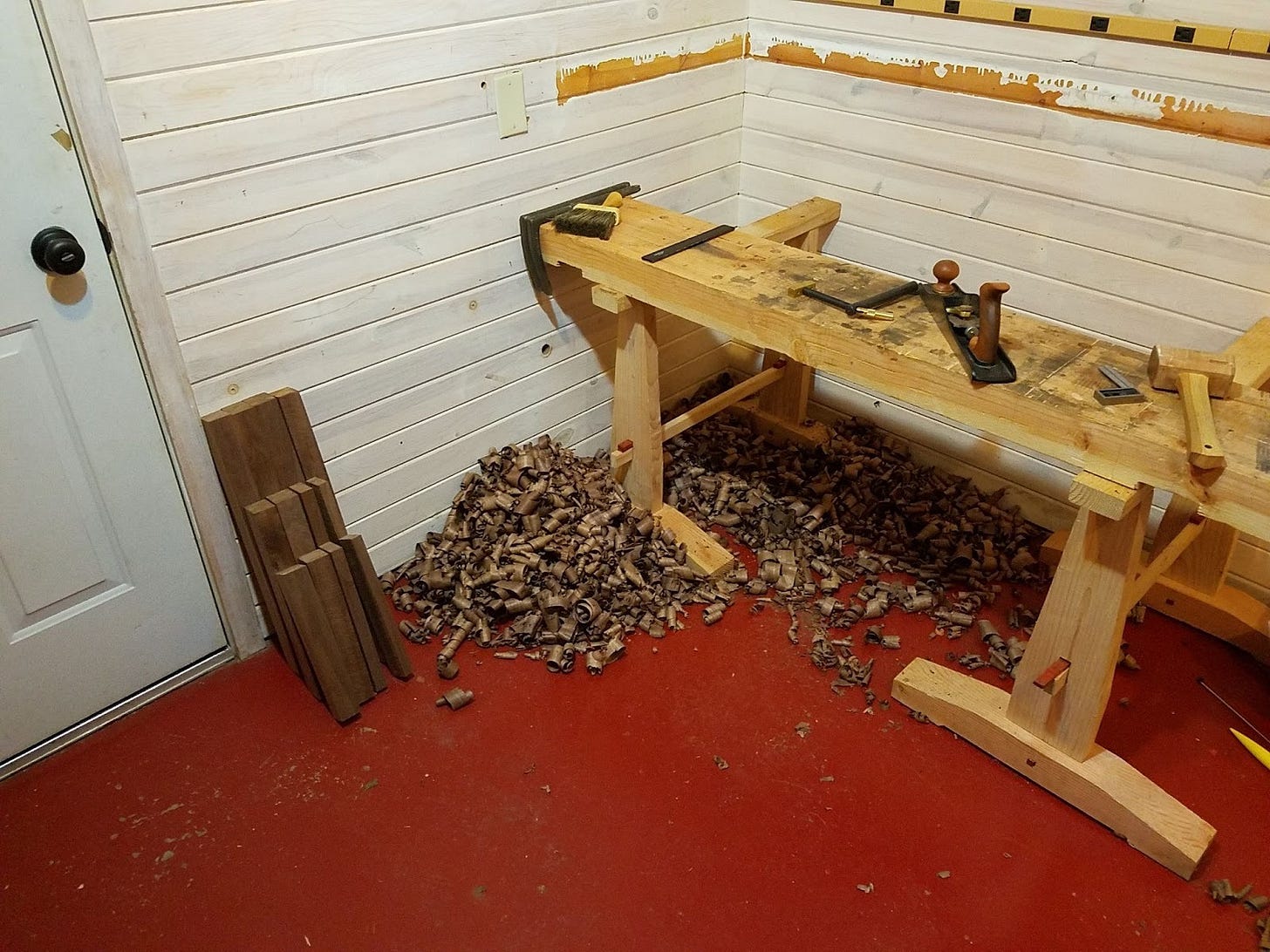🌀🗞 The FLUX Review, Ep. 211
October 16th, 2025

Episode 211 — October 16th, 2025 — Available at read.fluxcollective.org/p/211
Contributors to this issue: MK, Ben Mathes, Scott Schaffter, Lisie Lillianfeld, Erika Rice Scherpelz, Justin Quimby, Wesley Beary, Jasen Robillard, Neel Mehta, Kasey Klimes, Ade Oshineye
Additional insights from: Anthea Roberts, Boris Smus, Dart Lindsley, Robinson Eaton, Spencer Pitman, Stefano Mazzocchi, and the rest of the FLUX Collective
We’re a ragtag band of systems thinkers who have been dedicating our early mornings to finding new lenses to help you make sense of the complex world we live in. This newsletter is a collection of patterns we’ve noticed in recent weeks.
“The word Procrustean is thus used by analogy to describe, for example, situations where an arbitrary standard is used to measure success, while completely disregarding obvious harm that results from the effort.”
📝 Editor’s note: 211 is a prime number, so we wanted to do something a little different. Instead of our standard array of articles and links, we wanted to explore how we reconnect to the world around us.
Enjoy the gumbo
About a year ago, we asked ourselves, what is to slop as ham is to spam? The word we came up with was “gumbo.” Gumbo is something spicy, authentic, textured, visceral, and willing to take risks that alienate some of the audience. This is where people say “dead” or “sex” rather than “unalived” or “seggs” because they haven’t given up their requisite variety to fit inside a Procrustean bed.
This is unlike slop, which usually comes from the desire for inoffensive predictability and consensus, even if we have to falsify our preferences to achieve it. Slop may often be mediocre, but it’s usually not bad. Gumbo involves being willing to take the risk of being authentic, and so sometimes it will be bad. To paraphrase Clay Shirky, singing a grating “Happy Birthday” to your children is gumbo because it’s heartfelt, but having an LLM do it with perfect pitch would be emotionally hollow.
Sometimes systems fight back despite the reinforcing feedback loops that surround them. We want to retain the ability to say and do things that aren’t in the training data, that aren’t in the middle of the distribution, and that can’t easily be faked. There’s inherent value in our humanity. So in this week’s episode, we are taking the risk of being human. You may be surprised and offended by it, but take a moment to enjoy the taste of gumbo.
Touching grass
FLUX contributors reflect on how they reconnect with the real world.
Kasey Klimes
(Cover photo)
I realize it reads as a very literal interpretation of “touching grass,” but this photo is of my favorite place in the world, Prospect Park. It is a 24/7 celebration of human life in all its weird and lovely glory. I go here to feel immersed in humanity and rejuvenated by it. I’m resigned to never being able to move beyond walking distance from it. I took the photo with my medium-format film Mamiya 7, which I carry as a meditative practice in maintaining presence.
Ben Mathes
I stand in the corner of a room with a wooden floor and no windows. There are a few lines on the floor. I hit a small ball with a racket to parts of the room to make my opponent run after it. They do the same to me. We go until the ball has bounced twice or is hit out of bounds. The speed is intense. I sprint as hard as I can into a lunge, and then back. Many times in a row for a single rally. I do this for about an hour to an hour and a half. Until my body can’t anymore. Inside the room, there is sweat and competition. I can see the direct connection between where I place my feet, how I swing the racket, where the ball goes, and where I go. There is no diffuse 18-month product launch feedback cycle full of meetings and emails and chats that may or may not matter. There is the sweat, the effort, the split-second decisions to hit it here or there. In the end, my opponent is not my opponent. He is my co-conspirator, for that hour, to drop the rest of the world away, and in competition with each other be grounded in the immediate, the physical, and the strenuous effort to pull something like the best out of each other. I try not to check my work email between games. I usually succeed.
Scott Schaffter
I look ahead at the path through the trees. The rocks, curves, and obstacles ahead are reviewed to ensure I can hit them at the right speed and angle — adjusting gears and seat height ahead of time. I become absorbed in the flow and rhythm of the trail, and all the minutiae of life fade away. For that moment, all there is the sweat, speed, occasional air, and the trail unfolding ahead of me — ideally with someone to share it with and occasionally stop and take in the view.
Lisie Lillianfeld
After a day of video calls as an isolated head on a two-dimensional screen, I love to become re-embodied through acro yoga. Barefoot in the grass, I start warming up my muscles and joints. I find a friend or stranger at the outdoor meetup and we agree on a sequence to try. As we move in and out of the poses, I feel every subtle weight shift through our contact points. We each trust the other to sense and respond. We’re attuned to how our bodies are precisely stacked or counterbalanced relative to the ground. Sometimes we tip over and laugh. During a hard skill, I’m absolutely focused — even listening to our breaths. During an easier skill, I can play with the nuances to make our shapes more beautiful. It’s movement, connection, nature, and art all together.
Erika Rice Scherpelz
With fast fashion at our fingertips, it may seem irrational to create a sweater or blanket one stitch at a time. Yet that is what we do in fiber arts such as knit, crochet, and embroidery. When I crochet, I am creating an object literally millimeters at a time. If my goal were just to get a blanket, this would be a waste. But the process itself brings joy. Stitch by stitch I settle into a pattern that slows down my thinking and lets me solve a different type of problem: remembering the pattern while adapting it to the specifics of my fiber and color. The repetition brings me into a relaxed state where my mind can wander and make connections without the constant inundation of information that defines most of my life. At the end of the day I have something that feels more substantial, in quality but also in meaning.
Justin Quimby
In a world of instant connections via fiber optic cables spanning the globe, where connections are made through chats, pings, emails, and social media invites, my refuge is the sharing of stories over a kitchen table or a camp fire. Phones are off and out of sight (if there is service at all), and the connections are not made through dial tones or keyboard clicks, but instead through winks, nods, laughs, and the occasional chuck on the shoulder. Someone gets excited about a topic and runs to get the physical book they’ve been reading on the topic. These human connections, this collaborative building of a shared narrative and reference points, unmediated by screens or notifications, are what ground me.
Wesley Beary
Some things don’t need to move fast and break things, especially fingers. Woodworking reminds us to measure more than cut, providing scars and scrap should we forget. Yet wood remains forgivingly malleable, allowing adaptation and easing into workable results. Slow and steady, presence and progress; welcome relief for our embattled attention.
Jasen Robillard
“The Art of the Playlist: Curating the Soundtrack of Your Life”
Growing up through the 80s, I remember the radio being a constant companion in our family lives. It was always on in our kitchen, unless we were watching TV or it was past our bedtime. It would be left on to make the house sound lived in, as the small town way of fooling any would-be bandits. It was also on whenever we travelled by car. I fondly remember having my own radio tape deck and Walkman to play in my bedroom. If I timed things right, I could record my favourite songs off the radio onto mixtapes.
I never really stopped making mixtapes. Now I make playlists: with friends and family in mind, often in relation to a theme or topic I’m thinking about, and as accompaniment and mood-setting for pieces of art I craft. New tracks are added whenever I hear a new tune that belongs to a living, evolving playlist. Concerts, music festivals, new releases, and friend recommendations all play a part in the emergent, free-flowing curation of my life soundtrack. There’s just as much enjoyment in creating the playlists as there is in revisiting them as love letters from my past.
MK
Like my favorite language models, I like thinking step by step. It is easier than ever to be surrounded by screens and speakers emitting so many ideas via endless feeds, but it is also just as hard to comprehend everything we receive. Human cognition operates on a zero-sum architecture; touching grass helps shift the balance from feeds to digestion. When I go for a walk and look at the world and its systems above, below, and around me, I finally feel able to understand, organize, and synthesize the mediums and their messages. Like Thích Nhất Hạnh once wrote:
People ask me, “Why do you do walking meditation?”
The best answer I can give is, Because I like it.
A diverse world
Neel Mehta
What do we get out of traveling? As a history and archaeology nerd, I definitely enjoy spending hours gawking at sites of even modest historical importance. (Sites on my bucket list include the Roman hill made of broken pottery and the ancient Native American city that’s basically just a pile of dirt now.) But in hindsight, the thing I’ve enjoyed the most from traveling has been observing the unexpected cultural blends and historical connections that tie distant corners of the world together.
A good example is when I spent a winter break in college in Lima, Peru, where everyone’s go-to lunch places were, surprisingly, Chinese restaurants called chifas. In fact, the country’s national dish, lomo saltado, uses Chinese-style stir-frying and is prepared in a wok, then served over rice. It was over a bowl of $3 chifa noodles that I learned that Chinese immigrants have been coming to Peru since the 1600s, and many arrived in the 19th and 20th centuries to build the railroads, becoming a huge part of Peruvian culture. The Japanese came in large numbers too; just ask Peru’s (in)famous former president, Alberto Fujimori.
Another oddity I noticed was in New Zealand a few years back. I was struck by how Hawaiian a lot of the words and place names sounded: Whanganui, haere mai, Te Waipounamu. Then I remembered from my linguistics studies that the Maori and Hawaiian languages, despite being separated by thousands of miles, were related within the Austronesian language family. The “wai”s in New Zealand’s Waitomo Caves (famed for their glow-worms) and Hawaii’s Waikīkī Beach mean the same thing in both languages: water. It turns out the Austronesians also reached Easter Island (Rapa Nui) and even Madagascar. That means you could go from the USA to Chile to New Zealand to Africa and find indigenous speakers of the same language family.
But perhaps the most bizarre thing I’ve seen was in the south Indian state of Kerala, where I saw a number of dignitaries from an Arabian country on tour. Apparently, they really wanted to see heavy rainfall, so they flew to Kerala during the monsoon season. Later, as we were driving, I saw several restaurants with signs written in Arabic, a strange sight in a country where almost none of the billion-plus people speak Arabic. When talking to the locals, I pieced it together: basically every family in Kerala sends one of their sons to the Persian Gulf for work (as bad as the working conditions are there, the pay is worth it), and when these young men come back, they’ve developed a taste for Arabian food, hence the Arabian restaurants nestled amidst the dosa huts and fishmongers in Kochi. And these cultural ties with Arabia are so strong that those bigwigs chose South India, of all places, to do their rainfall tourism.
If there’s a lesson to be drawn from these wacky stories, it’s probably this: the world is (and always has been) far more diverse and interconnected than we tend to give it credit for. My systems-thinking friends here at FLUX deserve a lot of credit for helping me develop this eye for unusual connections; it certainly helps make every vacation an adventure, dipping a ladle into the vast melting pot that we call humanity.
Coda
you belong there
where your aspirations exceed
your current capacities
we are vessels
made to spill
© 2025 The FLUX Collective. All rights reserved. Questions? Contact flux-collective@googlegroups.com.





